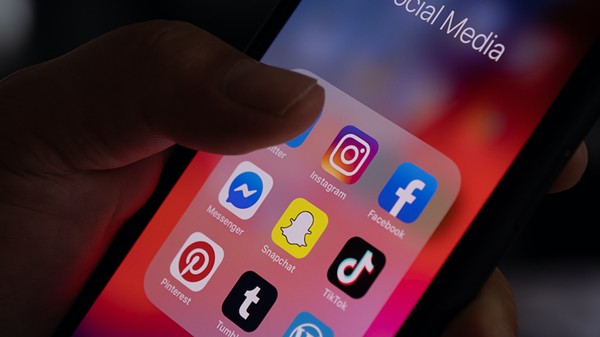Getting your game noticed isn’t easy, and it’s particularly tough for indie game developers right now. Players’ gaming backlogs are bigger than ever, and with an abundance of AAA games constantly entering the market – not to mention over 75,000 listed titles on the Steam marketplace – it’s no wonder we’re all being more selective with what we play.
Of course, there’s been a concerted effort by the industry to give indie games their time in the spotlight, and it’s great to see major publishers such as PlayStation, Nintendo, and Xbox hosting their own indie showcases throughout the year.
But even then, indie games have a much harder time cutting through the noise. There are a few reasons for this, from AAA marketing budgets often dwarfing the size of indie marketing budgets, to publications prioritising coverage of bigger titles due to audience demand and the SEO benefits of covering bigger franchises.
One of the biggest strengths of indie game developers is their ability to develop games with a specific audience in mind. Unlike large game developers who must cater to a broad audience (often due to larger commercial targets and shareholders to answer to), indie game developers have the freedom to create games that are tailored to the interests and preferences of specific fandoms. This approach allows them to create games that resonate deeply with their target audience, resulting in a passionate and dedicated fan base.
But to do that effectively, you’ll need to ask yourself:
- Who’s your target audience?
- Where do they spend their time?
- Which channels should you focus your attention on to reach them?
- Are you handling marketing in-house, with a creative agency, or a mix of both?
- Which marketing assets should you prioritise?
- Which game mechanics/features can be used to create marketing content?
- How will you monitor community response to create follow-up marketing materials?
That might sound like a lot to take in, but we’ve compiled five key lessons inspired by our work with Curve Games to help you build better indie game marketing campaigns that get people talking.
1. Leverage the power of your community to shape the direction of marketing assets – especially on dark social platforms
Whether you’re working on your first video game release or the latest entry in a long-running indie sequel, social listening tools are a vital part of gathering audience feedback and using that to create better marketing campaigns. There are lots of ways to do this.
In our case, because we work with multiple games and publishers, we’ve set up a data strategy team called Levels to monitor fan engagement and reaction through keyword and sentiment analysis on platforms such as Discord. But there are lots of free tools out there that give a degree of insight into sentiment, engagement, and other key metrics if you don’t have the luxury of building a bespoke tool.
It’s essential to thoroughly sweep ‘dark’ social platforms such as Slack communities, Facebook groups, and Reddit
In the moments following the release of a game announcement or new trailer, we set our team to work on analysing what the community is talking about, so we can reflect that in the marketing ideas we come up with. For example, this might mean monitoring the mentions and sentiment around specific characters in trailers and using this data to dictate what appears in the next trailer we work on.
We also monitor the density of specific keywords to see what gamers are talking about, whether it’s the art style, gameplay mechanics or specific features of a trailer. This data can be supplied to the studios we work with and steer the direction of future creative work and, in some cases, even game design changes.
The ability to do this quickly and efficiently on a platform such as Discord is especially important due to how busy servers can get, especially during the debut of new trailers or game showcases. Of course, you can also do this work manually, but it’s more difficult when you’re working in busy Discord servers that sometimes have over 100,000 members all posting in various channels.
If this is your first release, make sure you conduct market research in advance of working on creative (if you can afford it, of course), as the feedback and audience insight from this can and should be used to steer creative work.
Regardless of your approach, it’s essential to thoroughly sweep ‘dark’ social platforms such as Slack communities, Facebook groups, and Reddit (we call these ‘dark’ as there are no ready-made monitoring tools for these platforms). Often, you’ll find your most passionate fans are hanging out in gated communities rather than openly voicing their feedback in YouTube comments and Twitter (which are much easier to track). It’s these super fans you should be paying the most attention to.
With indie games, there may not be the budget for paid social campaigns, which means being aware of these fan communities is vital. When working with publisher Curve Digital, they found that focusing on Discord provided a space for its fan community to organically grow and offer their feedback and suggestions, which not only gave the fans the knowledge that they were being listened to, but it also let the Curve team turn what it was seeing into deliverables, both in-game and through updates and marketing efforts.
2. Consider how the functionality of your playable build will be used to create cinematics and assets
Whether you’re working on a launch trailer or a new video showcasing specific gameplay mechanics, it’s important to consider how the functionality of your game build – specifically camera placement and the player’s ability to traverse a map – will lend itself to creating marketing assets.
Creating a video using footage that’s captured in-game isn’t too different from scripting a TV show or trailer. Everyone’s briefed on who needs to do what, there’s a storyboard and script to follow, and we’re following instructions from an art director.
In most cases, the quality of the footage that can be captured for cinematic trailers and videos will be guided by the placement of in-game camera(s), with a free-roam camera option providing the most freedom for creative teams.
This is usually done via a theatre mode, typically used by players to capture their own video footage or photos but just as useful to creative teams for creating cinematics. As an example, Human Fall Flat’s theatre mode has a feature that lets you record what you’ve played, which you can then replay and view from different angles, which is what we used to capture footage of the game in its launch trailer. In turn, this feature has been embraced by YouTubers to create their own videos.

20ten’s director of gaming Luke Fisher
It’s not the end of the world if your game doesn’t have a free-roam camera option, but it does mean your creative team will have to capture in-game footage from specific angles, which limits what you can do from a cinematic perspective. As such, we’d always recommend working this level of functionality into your earliest builds, as trying to figure this out afterwards can be difficult, especially if your creative partners make the request and you’ve got a strict deadline to meet.
Creating an amazing game trailer can be tough because there are so many different directions you can take. Your focus, whether it’s on showcasing gameplay mechanics, a compelling narrative, or sleek design, should be determined by your audience’s wants and needs. Once again, market research and audience feedback can be used to inspire the direction of launch trailers, so if you’ve got it, make sure you share it with your design team or creative studio.
While game trailers are important, you should also remember that your hero trailer isn’t going to be the be-all and end-all of how people find out about your game. A lot of companies invest in a big trailer, but the reality is you have a few seconds to captivate people, so make sure to have an awareness and flexibility of what stories you’re trying to tell, and the emotions you’re trying to elicit.
3. Think about the bigger picture – what can the community do with your marketing assets?
It’s not unusual for gaming communities to rush off and start creating their own content after getting excited about a new trailer or announcement for a game they’re following. So it helps if a game can be ‘memeified’ and your community can use gameplay footage and marketing assets to create their own content.
For 2021’s I Am Fish, we were blown away by the amount of content that fans were putting out, so we built on that by creating a Twitch filter via a Snapchat plug-in that would turn their faces into fish. This helped to bring that sense of story and immersion from the game into streams while making creators feel like they’re more connected with the game, all while encouraging them to create more content around the title.
Plus, it provided something that contributed to the overall success of the marketing campaign by making it really stand out.
Think about how you incorporate memeable content into your marketing assets, whether these are soundbites from gameplay clips or new designs from key art that creators can use to create something funny.
4. Be more ambitious with your marketing and think outside the box
The indie game community is full of amazing success stories about games that dared to be different. You can’t always rely on big publications to cover your game in detail, so use your position as an indie studio as an opportunity to be ambitious with your marketing: think outside the box, and embrace all things weird and wonderful!
For Lawn Mowing Simulator’s trailer, the challenge was creating an exciting launch trailer that gets people pumped for a game that’s essentially about cutting the grass. You subvert their expectations and play on the aspects people might expect to be dull. We did this by giving the lawnmowers the showroom treatment – showcasing glossy CG visuals with dramatic cuts with plenty of close-up shots and slow-motion camera pans. It was a hit with fans.
Think about how you can get your community involved with marketing materials by creating spaces to share and engage with fan art
Gamers who love indie games are fans precisely because these games are built around ideas and concepts that make them different from a mega-budget AAA franchise. We all know about games built on tiny budgets that have been successful precisely because they are so unique. So as much as you can, build your marketing and engage your community around those points of difference.
It’s also with remembering that the point of marketing and fan engagement is to get gamers to talk about, share, buy, and actually play your game! A super-active Discord server is great, but ultimately pointless if nobody wishlists the game on Steam, or buys a copy at launch. So be mindful of community feedback on your marketing materials.
Think about how you can get your community involved with marketing materials by creating spaces to share and engage with fan art and make sure you keep them updated with your game’s progress every step of the way – but also remember the ultimate goal of all the effort you’ll end up putting in.
Luke Fisher is director of gaming at 20ten, a full-service creative agency accross film, gaming, music, and sports. Over the years, he’s worked on campaigns for the likes of PlayStation, Square Enix, Activision, and Plaion.




